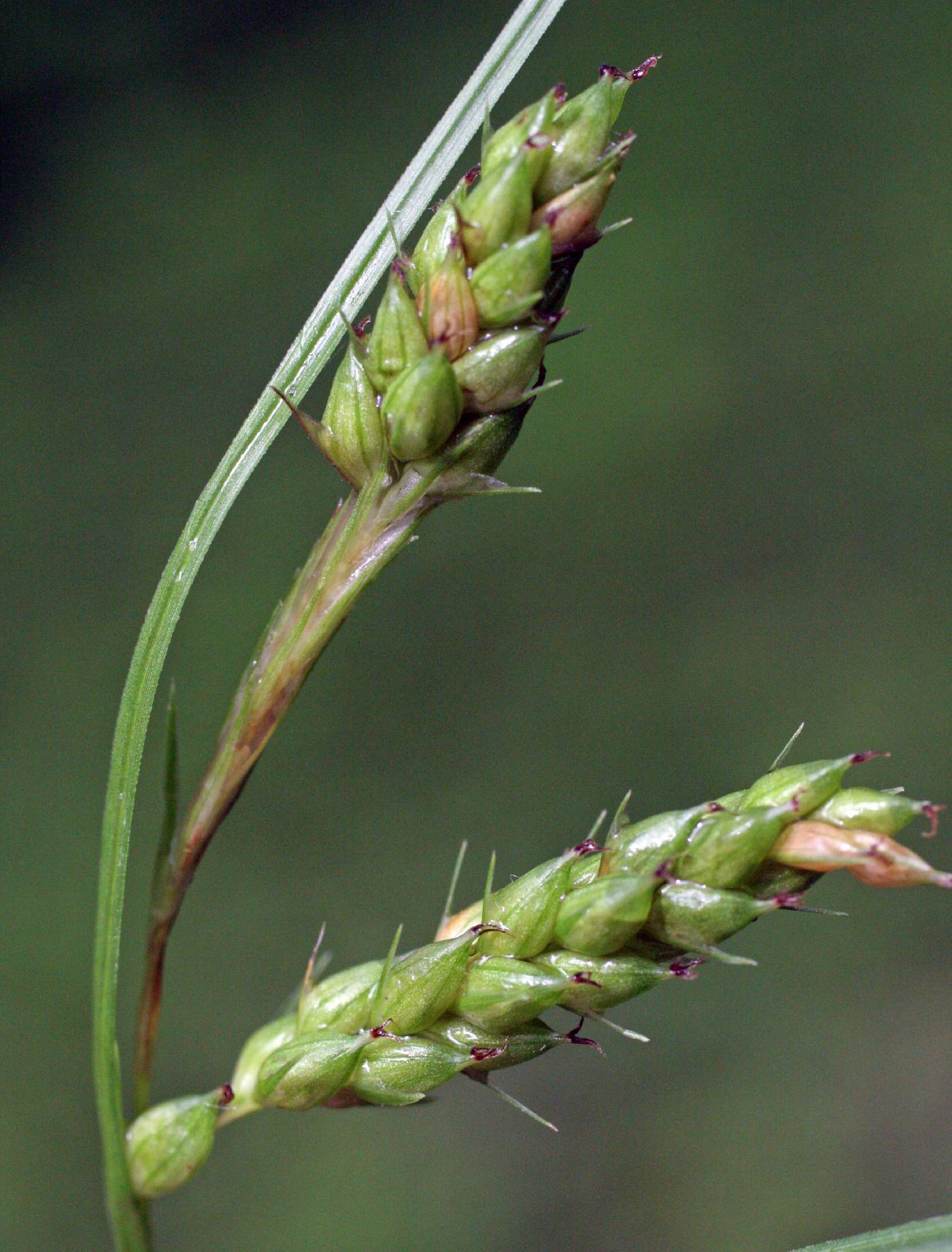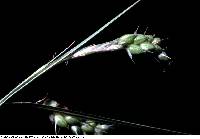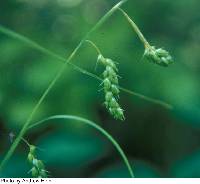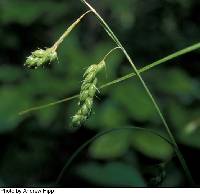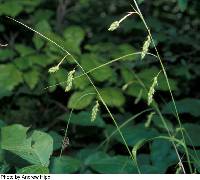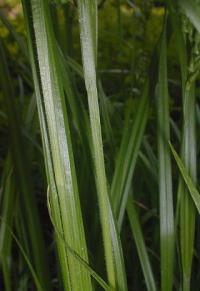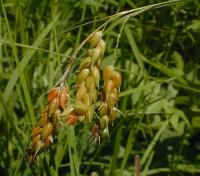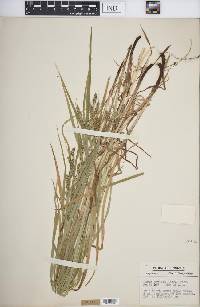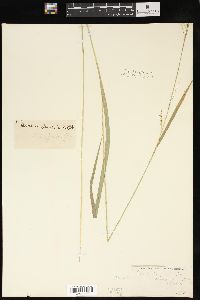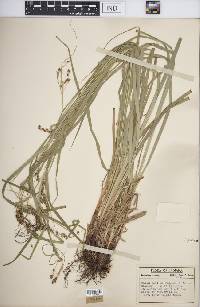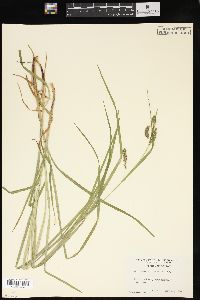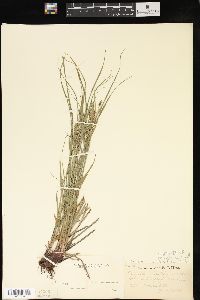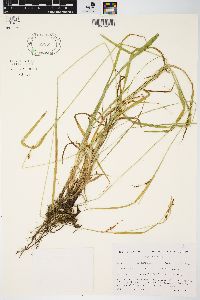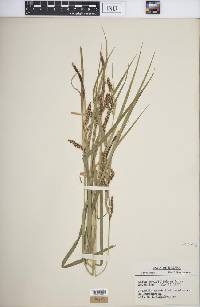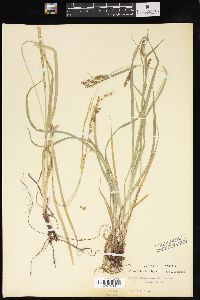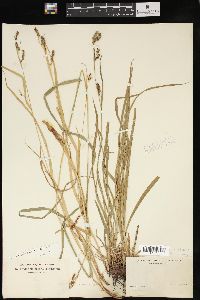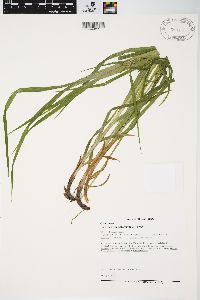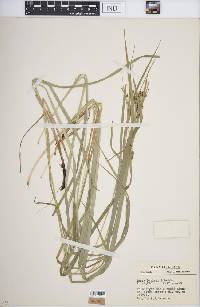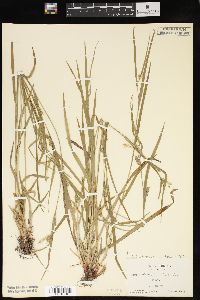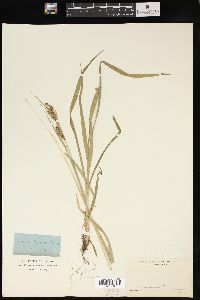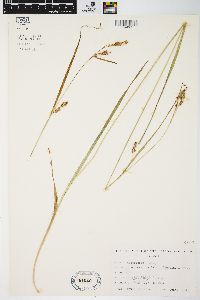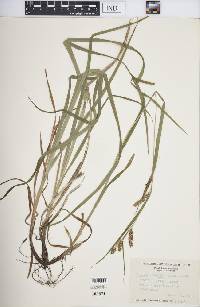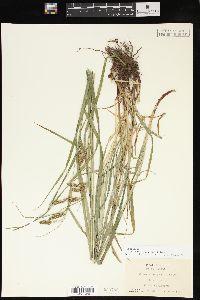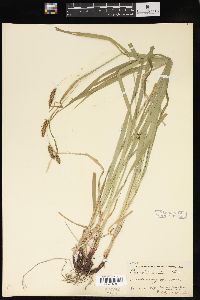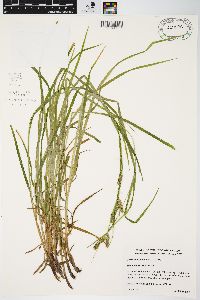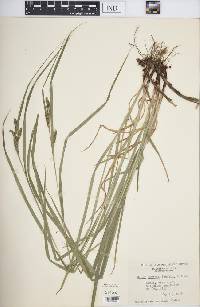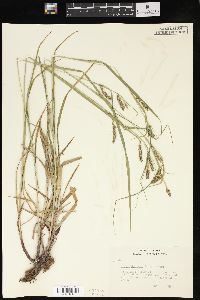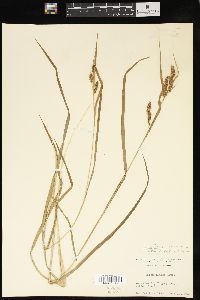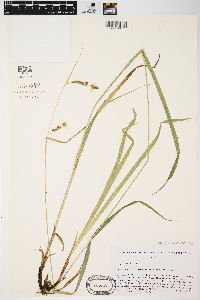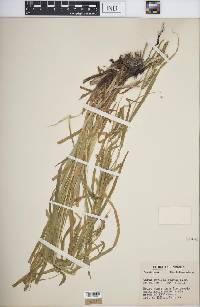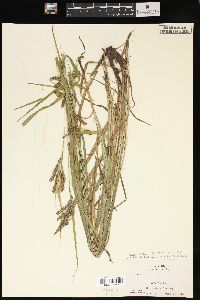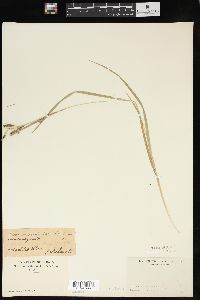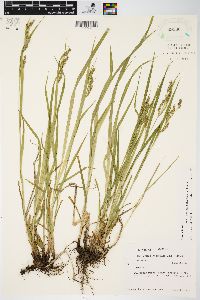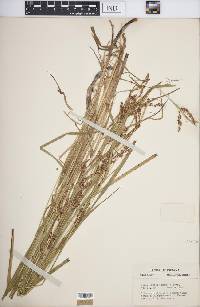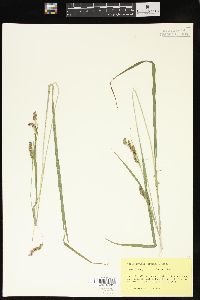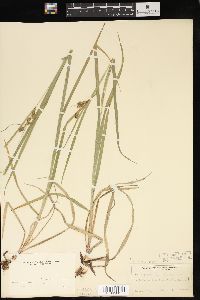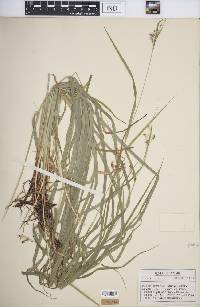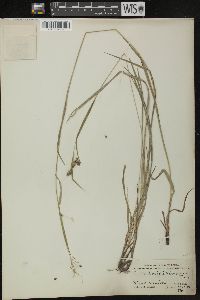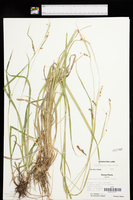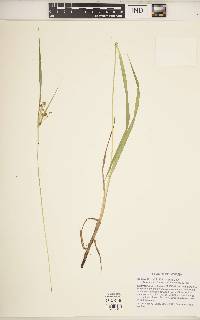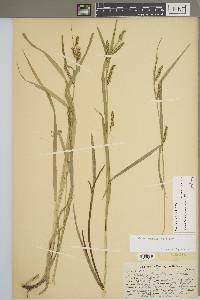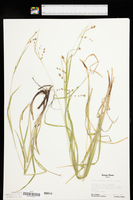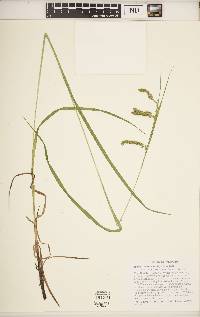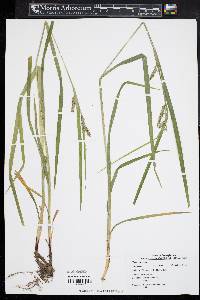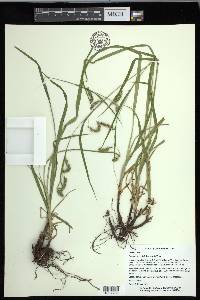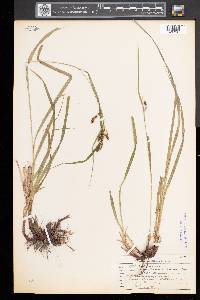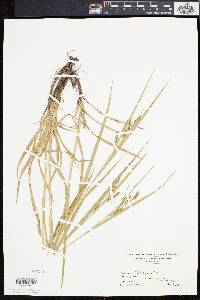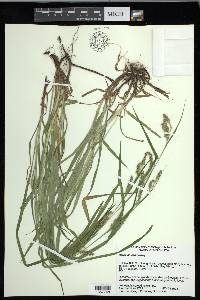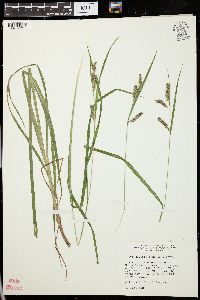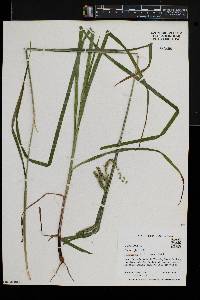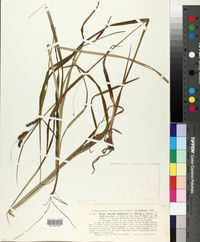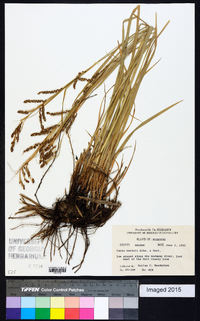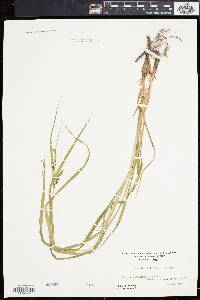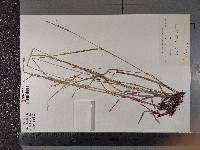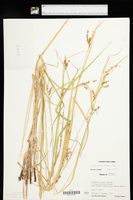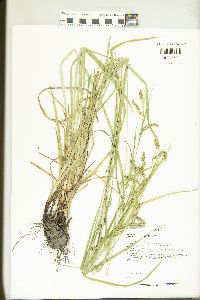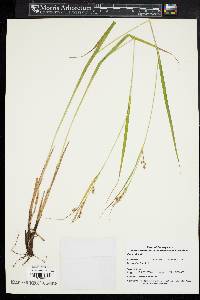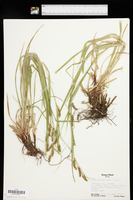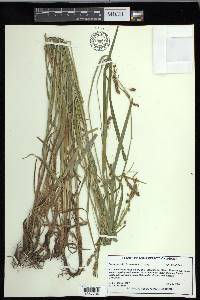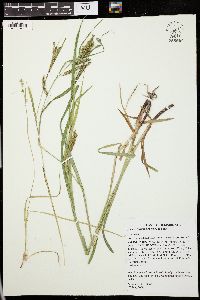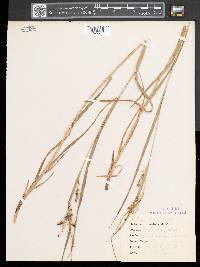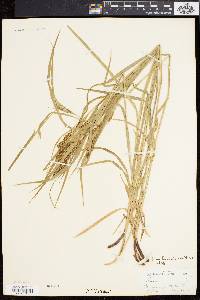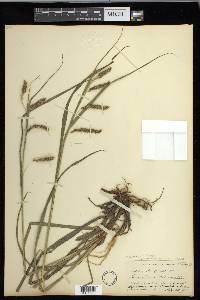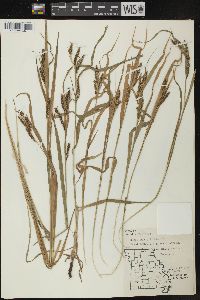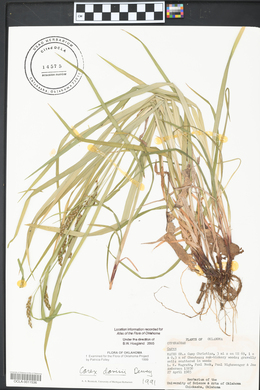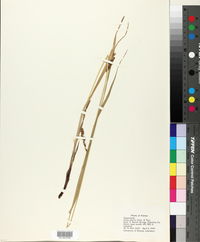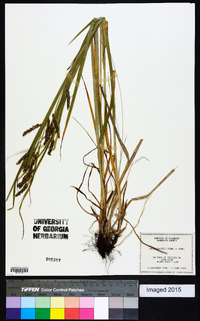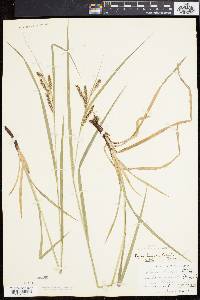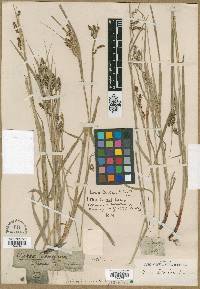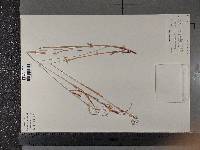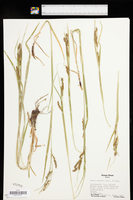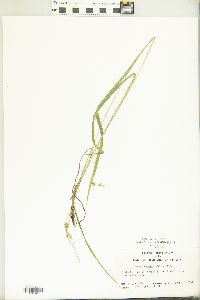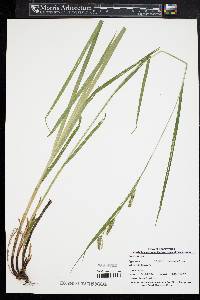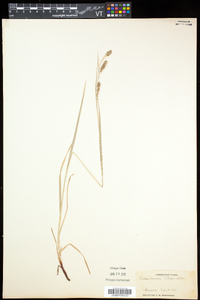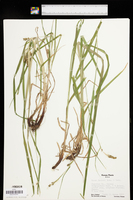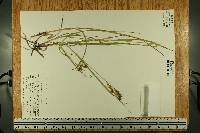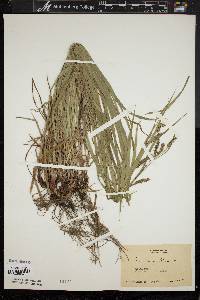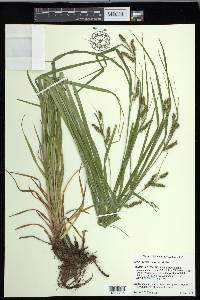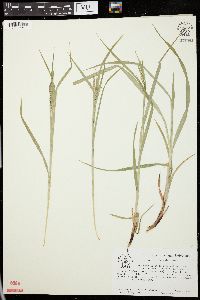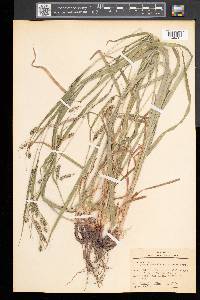Carex davisii
|
|
|
|
Family: Cyperaceae
Davis' Sedge
|
Plants densely cespitose. Culms dark maroon at base; flowering stems 30-100 cm, as long as leaves at maturity or a little shorter, 1.5-3 mm thick, glabrous or pubescent on angles. Leaves: basal sheaths maroon, bladeless, sheaths pubescent or rarely glabrous; others grading from maroon to green on back, light brown-hyaline on front, red dotted and usually pubescent distally, prolonged at apex; blades flat, 3-8 mm wide, usually pubescent on abaxial surface at least near sheath, minutely scabrous on margins. Inflorescences: peduncles of proximal spikes slender, 10-25 mm, pubescent; peduncle of terminal spike 10-30 mm, pubescent; proximal bracts equaling or often exceeding inflorescences; sheaths 15-45 mm; blades 2-6 mm wide. Lateral spikes 2-4, 1 per node, well separated or distal 2 usually overlapping terminal spike, mostly erect when young but at least proximal spikes nodding at maturity, pistillate with 10-40 perigynia attached 1 mm apart distally and to 4 mm apart proximally, cylindric, 10-50 × 3.5-6 mm. Terminal spike gynecandrous, sessile or pedunculate, 15-35 × 2-6 mm. Pistillate scales pale hyaline with broad green midrib, elliptic or ovate-lanceolate, body shorter than mature perigynia but extending into pubescent green awn 2.5-3 mm, often short-ciliate near apex. Perigynia green to olive-green, often red dotted, 2-ribbed with 9-12 almost equally prominent, evenly spaced veins extending from base to apex, slightly inflated around achene, ellipsoid-ovoid, 4.5-6 × 2-2.5 mm, membranous, base rounded, apex narrowing abruptly to minute beak, glabrous; beak bidentate, less than 0.5 mm. Achenes distinctly stipitate, 2.2-2.7 × 1-1.2 mm, stipe 1 mm. Fruiting late spring-mid summer. Floodplain forests; rich deciduous forests and forest margins, usually along streams or in ditches, wooded ravine slopes, meadows, fields and thickets; often associated with calcareous soils; Ont.; Ark., Conn., Del., Ill., Ind., Iowa, Kans., Ky., Md., Mass., Mich., Minn., Mo., Nebr., N.J., N.Y., Ohio, Okla., Pa., Tenn., Tex., Vt., W.Va., Wis. Glabrous forms are sporadic in the western part of the range and were recognized as Carex davisii forma glabrescens by G. Kükenthal (1909) but do not warrant taxonomic recognition. A single collection of a putative sterile hybrid between C. davisii and C. hirsutella has been reported from Missouri (G. Yatskievych 1999+) but needs further study to confirm the parentage.
Tufted, 3-9 dm, purplish at base; main lvs 4-8 mm wide, hairy beneath; sheaths hairy; terminal spike peduncled, with distal perigynia; pistillate spikes 2 or 3, the upper 2 often approximate, cylindric, 2-4 cm נ6 mm, erect or spreading or even nodding, short-peduncled; bracts all sheathing; pistillate scales white or hyaline with green center, oblong or ovate-oblong, shorter to somewhat longer than the perigynia, narrowed into a prominent awn; perigynia dull orange at maturity (unlike related spp.), ovoid, 4.5-6 mm, half as wide, obscurely trigonous, sharply several-nerved, acuminately tapering into a sharply bidentate beak 0.7 mm; achene concavely trigonous. Woods; Mass., Vt. and s. Ont. to Mich. and Minn., s. to Md., Nebr., and Tex., abundant in the Middle West. Gleason, Henry A. & Cronquist, Arthur J. 1991. Manual of vascular plants of northeastern United States and adjacent Canada. lxxv + 910 pp. ©The New York Botanical Garden. All rights reserved. Used by permission. From Flora of Indiana (1940) by Charles C. Deam Frequent in neutral or calcareous soils in low, especially alluvial, beech and beech-maple woods and in moist roadside ditches. It sometimes superficially resembles luxuriant forms of Carex grisea from which it may be readily distinguished by the terminal spike which is gynaecandrous in C. davisii and staminate in C. grisea. ...... Indiana Coefficient of Conservatism: C = 3 Wetland Indicator Status: FAC |
|
|
|

